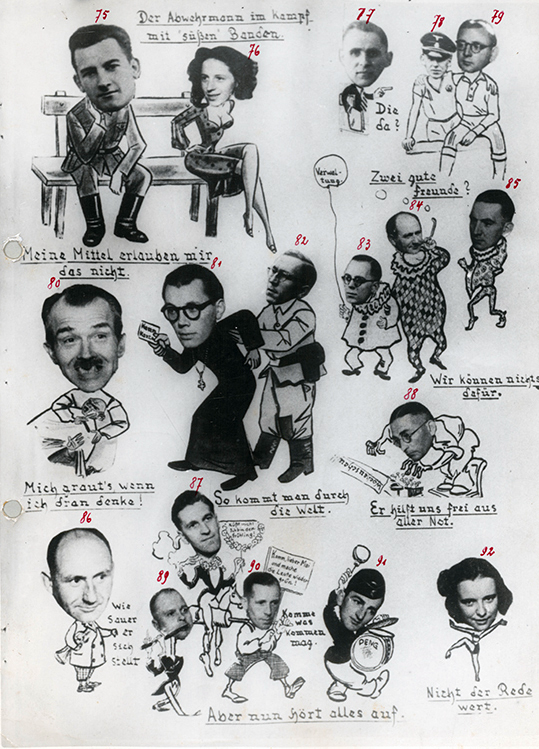The caricatures of the Metz SD
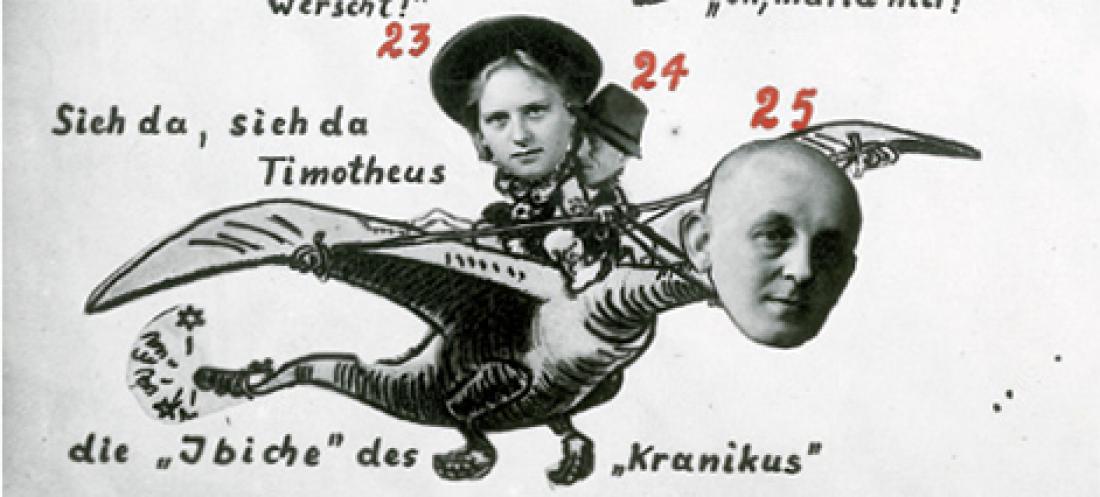
The type of document presented here is quite exceptional. While its author wanted to produce a work of humour, he had no idea that his caricatures would serve to expose some of the Sicherheitsdienst agents in Metz and their French auxiliaries, the very same who had dealt heavy blows against the Resistance in Moselle.
On New Year's Eve of the year 1943-1944, the officers of the Metz Sicherheitsdienst (SD) fully intended to enjoy the festivities. Subjected to the authority of Gauleiter and head of the civilian administration Josepf Bürckel, Moselle had been suffering from the annexation for two and a half years. Among the guests was Heinz Lautenschläger, aged 31, head of section III C (Cultural Affairs) and, in his spare time, a talented caricaturist with a fierce sense of humour.
Very useful caricatures for the French special services
A high point of the evening was Lautenschläger's sketches of his SD colleagues, the service's Moselle agents and several of his superiors, including the SS general Anton Dunckern, commander in chief of the SIPO-SD for Lorraine-Saarland-Pfalz. Five pages of caricatures were found in the Metz SD offices following the Liberation. Analysed by the staff of the French counter-espionage Bureau de la documentation (BDOC, Documentation Bureau), they put faces to the names of several German SIPO-SD officers in the annexed Moselle. The photos in the caricatures were extracted and enlarged in order to supplement the individual intelligence files of the senior officers and employees in the German police, enabling them to be identified, in prisoner-of-war camps for example.
The artist did not forget to portray himself among the 92 humorous drawings conserved. On the pages illustrating this article (see slideshow), he can be found under number 91. Beating his drum energetically, while his colleague Rolf Dupin (no. 89) plays the flute, they provide a musical accompaniment for a pagan parade in honour of spring and the merry month of May, the beautiful season being represented by chief squad leader (Hauptscharführer) Erich Langenberg (no. 87), a precious figure perched on a toy horse! Lautenschläger wrote: ”But now, everything stops”. Because the great days of the annexation were over.
The drawings can be surprising, and not always in the best taste. Their very existence goes against the stereotypical public image, that sees German police officers as brutal, pitiless figures. Clearly the staff of the Nazi intelligence service were people who enjoyed life like anyone else. They could laugh, even at themselves, and liked having fun. The SS could have a sense of humour!… even though their actions were nothing to smile about.
The most dangerous agents in the Moselle SD
On the appended page, the ”victims” being ridiculed include two Moselle men recruited by service VI, the Exterior SD, the intelligence body responsible for counter-espionage. Alphonse Scherer (no. 75) and Jean Schoving (no. 81) were among the most dangerous and efficient agents provocateurs recruited by captain (Hauptsturmführer) Heinrich Fanelsa (no. 82), head of service VI. At the time, the two young men - Scherer was 24 and Schoving 25 - had just won distinction in their Sarreguemines region by infiltrating a network that was trying to exfiltrate an Allied airman. The organisation was unusual in that it was led by a German anti-Nazi, Karl Borgmann. The affair ended dramatically with a series of raids between September and November 1943, leading to about fifty arrests. Karl Borgmann, cornered by the police, committed suicide.
What attracted the attention of our caricaturist was the amorous efforts of Scherer. He is shown seated on a bench, a bashful lover, melancholy and apparently trying to win the favour of a curvaceous German secretary. She is Irène Kirsch (no. 76), Fanelsa's shorthand-typist. Lautenschläger teases the young man's attentions with the caption: ”The counter-espionage agent struggling with 'sweet' bonds”. This romantic imbroglio was to cost Alphonse Scherer dear. Fanelsa learned of his best agent's relationship with the young woman and, even more seriously, that he had made his conquest have an abortion, a particularly serious crime under the Nazi regime. Fanelsa had Scherer arrested in August 1944 and sent to the Schirmeck re-education camp.
Jean Schoving is shown in a priest's cassock. Hardly surprising, as the young man had been considering an ecclesiastical career before the war, having been an oblate. A humorous detail is the cross of Lorraine the former postulant to the spiritual life is wearing around his neck, rather than the Christian cross. Apparently having difficulty walking, ”Father” Schoving is being guided along the path of righteousness by his superior, Heinrich Fanelsa, who is supporting him under the arms. This is probably an allusion to Schoving's weak character - he began working for the Germans under the influence of his ”boss”. A caption sums up the nature of their relationship: ”The way of the world”.
The two young men were condemned to death by the Moselle Court of Justice and shot. Their superior, Heinrich Fanelsa, was never questioned.
Cédric Neveu
Historian, specialist in Nazi repression and policing
FOR MORE INFORMATION
All the caricatures, and the photographs that go with them, are conserved in a file on the Lorraine SIPO-SD staff with record number GR 28 P 7 79. The file can be brought to the reading room.
Some of the caricatures were presented in the ”Collaboration” exhibition, which was shown at the National Archives between November 2014 and April 2015.
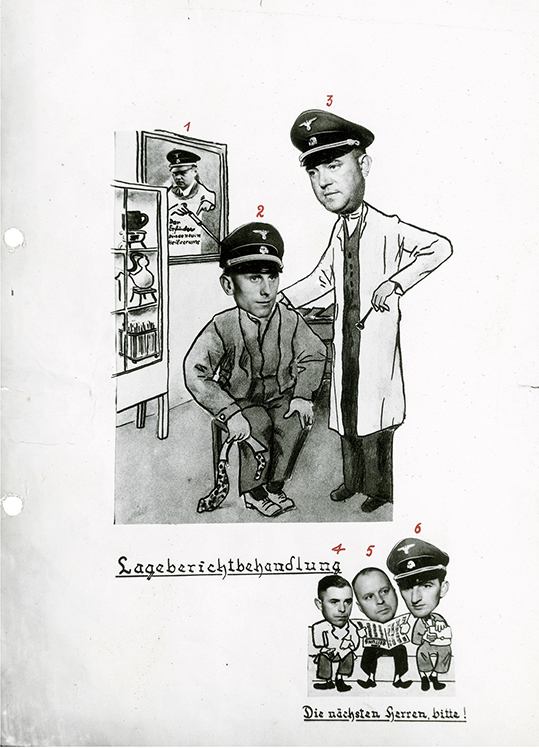
Caricatures du SD de Metz.
© SHD
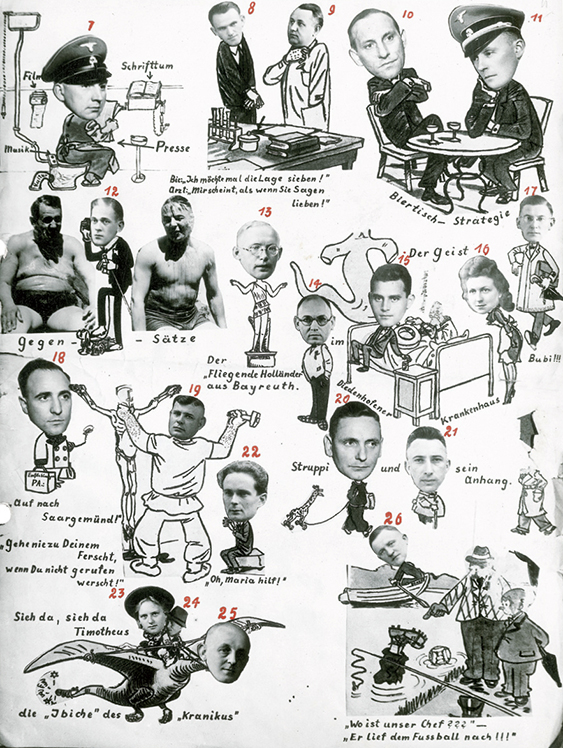
Caricatures du SD de Metz.
© SHD
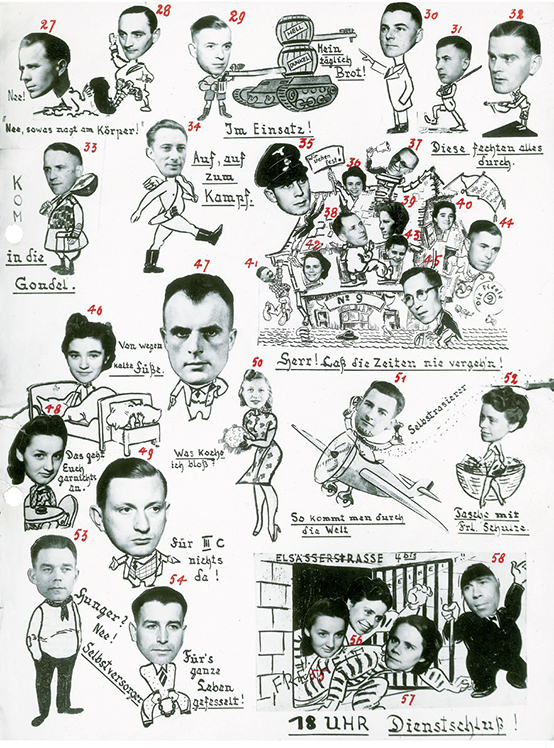
Caricatures du SD de Metz.
© SHD
